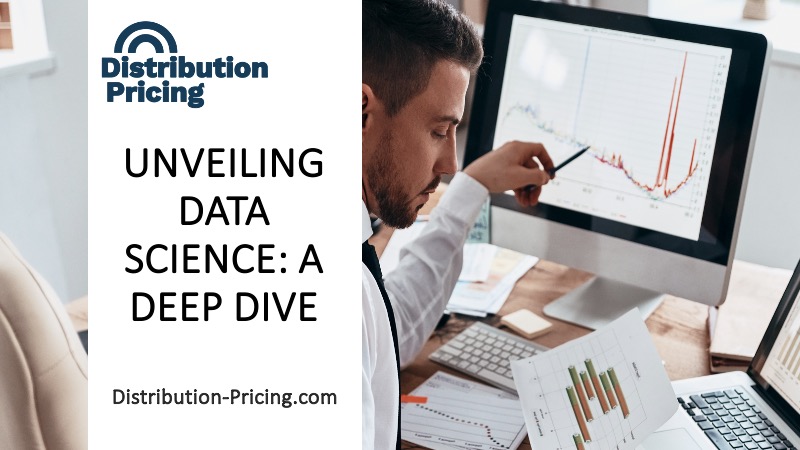Your passion for distribution pricing is what fuels our mission to deliver the most valuable and actionable insights to your inbox.

Unveiling Data Science: A Deep Dive
This post contains sponsored marketing content.
Data has been the backbone of learning and understanding trends for ages. Data science plays a crucial role in forecasting results, identifying trends, visualizing relationships and patterns, and transforming raw data into valuable insights.
Because of their day-to-day data diving, some pricing managers have considered furthering their career with training in data science. So we turned to our sponsor Codeacademy for an overview. Codeacademy offers what they call a “Career Path,” in data science which is designed to teach you exactly what you need to start a new career. Curated by their team of experts, career paths contain a collection of courses, projects, prep for technical interviews, and more. By the end, you’ll be ready to start interviewing for entry-level jobs in the career of your choice.
Understanding Data Science and Its Significance
Consider data science as a blend of probability, statistics, software engineering, and domain expertise. The superpower of a data scientist lies in their ability to transform massive volumes of data into actionable and comprehensible information.
With the surge in data collection and the evolution of computing power over the last decade, organizations across various sectors have identified the power of data. While data science teams may differ across companies, all data scientists require a strong foundation in statistics, coding abilities, and communication skills.
Witnessed a self-driving car or received music recommendations from Spotify? Then you’ve already experienced the magic of data science.
A Closer Look at Data Science Careers
Data scientists’ duties can vary depending on the industry, though the required skills are similar. Here’s a glimpse into the tasks a data scientist might undertake:
- Market Research: Some data science roles involve understanding and reacting to customer behavior through market research. After all, identifying the right questions is a critical part of a data scientist’s role.
- A/B Testing: Data scientists often plan and execute A/B tests to compare different versions of a webpage or application to identify which version converts more visitors into customers. A/B testing is a potent technique to align business objectives with user preferences.
- Predictive Analysis: Data scientists may develop and fine-tune machine learning models for pattern recognition or prediction. For instance, they could analyze the speed and accuracy of online test takers to identify behavioral patterns associated with dishonest actions.
- Database Management: Data scientists frequently work with databases to ensure data accessibility and comprehension by their peers. They often use SQL to extract data from databases for analysis or model development.
- Transforming Insights into Recommendations: By leveraging data to gain insights into marketing, research, and development areas, data scientists can guide other departments on essential knowledge and how to enhance their performance. They can also help companies understand their customers better and provide personalized suggestions for related content and products.
The role of a data scientist can differ greatly from one company or industry to another. Other factors include the team’s composition and the company’s age.
People performing the above functions may have titles other than “data scientist.” These could include data analyst, systems analyst, business intelligence analyst, statistician, or machine learning engineer or even pricing manager. As the role of a data scientist continues to evolve, job titles may vary significantly across organizations. Therefore, when applying for data science roles, scrutinize the job description and ask plenty of questions during interviews.
Most Popular Languages in Data Science
The tools that people use change really quickly. Understanding the theory behind what you’re doing is most important. If you understand the concept, then you can learn different tools. Familiarity with abstract ideas before moving onto actual programming is critical.
However, there are a few programming languages currently dominating the data science world:
Python: A flexible, general-purpose language with numerous data science libraries, including NumPy, pandas, SciPy, and matplotlib. Python’s easy-to-maintain and English-like syntax makes it a favorite among many programmers.
R: Designed for statistical computing, R’s data structures and variable types are user-friendly for data manipulation and analysis. Despite slightly different syntax, R and Python share many functionalities.
SQL: Most organizations use a database system to store and organize vast amounts of data. SQL comes into play when a data scientist needs to extract data from a database, which is then imported into R or Python for further analysis.



